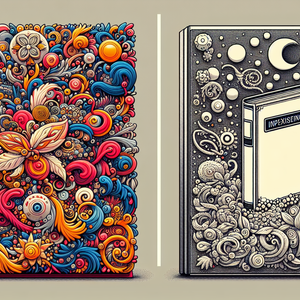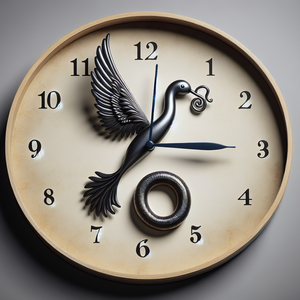Limbs for the Wild: How Custom Prosthetics Are Transforming Wildlife Rehabilitation

For decades, the prognosis for wild animals suffering severe limb injuries was bleak. Whether harmed by vehicle collisions, entangled in poaching snares, or victims of natural accidents, many animals faced euthanasia as the kindest option. The inability to move, hunt, or fend for themselves meant survival in the wild was virtually impossible. However, recent advances in materials science, 3D printing, and biomechanical engineering have fundamentally changed the outlook. Today, animals ranging from elephants to eagles are receiving personalized prosthetic limbs, beaks, and fins—dramatically improving their mobility, independence, and quality of life. In some cases, these advancements even make it possible for rehabilitated animals to return to their natural habitats. The emergence of specialized companies, such as those highlighted in recent business trend reports, underscores the growing recognition and demand for custom prosthetics for exotic animals. These tailored solutions are not only enhancing individual mobility but also advancing the broader field of wildlife rehabilitation.
Engineering Hope: The Collaboration Behind Each Limb
Behind every successful animal prosthetic is a story of collaboration. Veterinarians, engineers, prosthetists, and animal caretakers must work together to design and fit devices that suit the unique anatomy and behavioral needs of each species. The process often begins with advanced imaging technology, such as CT scans or 3D modeling, to meticulously map the injured area. Notable examples include Grecia the Toucan from Costa Rica, who received a 3D-printed beak after being injured by poachers, and Mosha the Elephant from Thailand, who became the first elephant to receive a prosthetic limb after losing her leg to a landmine. These stories, along with others involving turtles, cheetahs, and eagles, showcase global collaborations that push the boundaries of technical and ethical possibilities.
Challenges and Innovation
Adapting prosthetics for wild animals presents unique challenges. Animals cannot communicate pain or discomfort, making the fitting process reliant on observation and iterative testing. Each species and individual presents distinct anatomical and behavioral requirements. Key challenges include behavioral considerations (e.g., a sea turtle's need for a water-resistant prosthesis), durability, and fit/comfort. Innovative solutions involve 3D printing for rapid prototyping, advanced materials like flexible polymers and titanium, and modular designs that allow for adjustments as animals grow or change. These innovations not only benefit animals but also contribute to advancements in human prosthetic technology.
Conservation Implications
Custom animal prosthetics benefit more than just individual animals. Rehabilitation centers, sanctuaries, and conservation programs now have new tools to treat injured wildlife, reducing the need for permanent captivity or euthanasia. High-profile prosthetic cases raise public awareness and support for conservation, highlighting threats like poaching and habitat destruction while showcasing human ingenuity and compassion. The exchange of knowledge between animal and human prosthetic development accelerates innovation in both fields.
The rise of custom prosthetics for wild and exotic animals symbolizes a profound shift in how we view and care for the natural world. By merging cutting-edge technology with empathy, veterinarians, engineers, and caretakers are rewriting the narrative of wildlife rehabilitation. Stories like those of Grecia and Mosha are testaments to the transformative power of second chances. As innovation and collaboration continue, the promise of 'Limbs for the Wild' grows, offering hope for injured animals, the future of conservation, and our relationship with all living beings.
Wildlife Prosthetics Engineer
Specialized prosthetics firms (e.g., Bionic Pets), research universities, large wildlife rehabilitation centers
Core Responsibilities
Designs custom prosthetic limbs, beaks, or fins for diverse animal species, using advanced CAD software and 3D printing techniques.
Collaborates with veterinarians and animal behaviorists to refine device fit, function, and durability for unique anatomical and behavioral needs (e.g., enabling a sea turtle's swimming or a cheetah's sprinting).
Required Skills
Experience in biomechanical engineering, materials science (flexible polymers, titanium), and rapid prototyping.
Veterinary Rehabilitation Specialist (Wildlife Focus)
Wildlife hospitals (e.g., The Wildlife Center of Virginia), zoological parks, animal sanctuaries
Core Responsibilities
Leads the post-surgical or post-injury recovery process for wild animals, developing individualized physical therapy plans and monitoring adaptation to prosthetic devices.
Utilizes knowledge of animal behavior to assess pain, comfort, and functional improvement, adapting protocols for species-specific needs.
Required Skills
Must be a licensed veterinarian (DVM or equivalent) with additional certification in veterinary rehabilitation or physiotherapy; experience with exotics is highly valued.
3D Medical Device Modeler (Animal Applications)
Biomedical R&D labs, veterinary tech startups, companies specializing in custom animal medical devices
Core Responsibilities
Translates veterinary imaging (CT, MRI, laser scans) into precise digital models for fabrication of animal-specific prosthetics or orthotic supports.
Ensures models account for growth, wear, and environmental exposure; may use simulation software to predict device performance in wild settings.
Required Skills
Proficiency in medical imaging software (e.g., Mimics, 3D Slicer) and additive manufacturing workflows is critical.
Wildlife Conservation Technology Coordinator
Major NGOs (e.g., WWF, The Nature Conservancy), governmental wildlife agencies, academic research consortia
Core Responsibilities
Manages cross-disciplinary technology projects (such as prosthetic limb development) that directly support wildlife rescue, rehabilitation, and release.
Facilitates partnerships between engineers, biologists, and conservation organizations, overseeing project logistics, funding, and regulatory compliance.
Required Skills
Experience in project management (PMP certification preferred), technology transfer, and a background in conservation or biological sciences.
Animal Behavior & Welfare Analyst (Assistive Devices)
Universities, wildlife research centers, prosthetic development teams focused on animal applications
Core Responsibilities
Studies how injured or prosthetic-fitted wild animals adapt behaviorally and physiologically, providing critical feedback for iterative device improvement.
Designs and conducts observational studies, collects behavioral data (e.g., movement patterns, social integration), and advises on animal welfare best practices.
Required Skills
Advanced degree in animal behavior, zoology, or veterinary science required; expertise in data analysis and ethology is essential.


